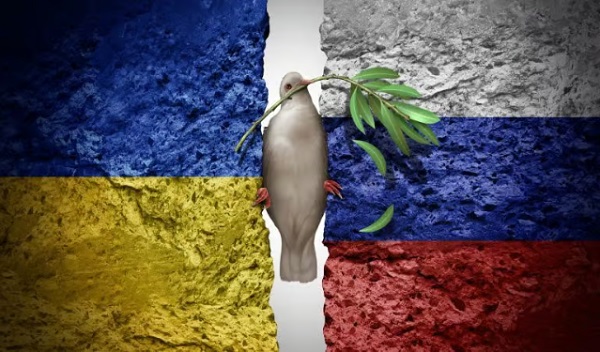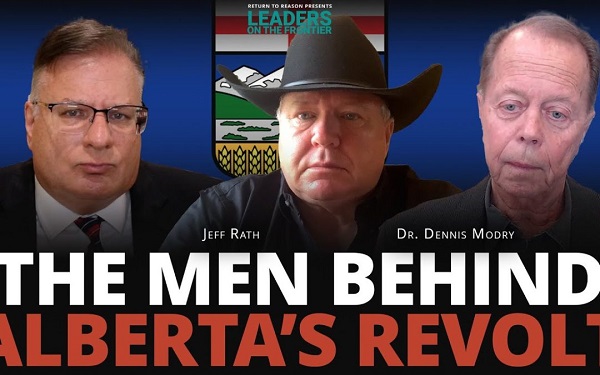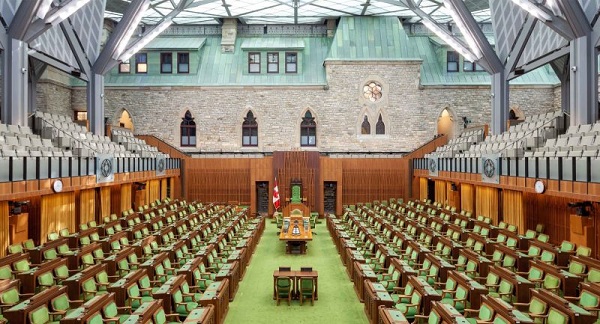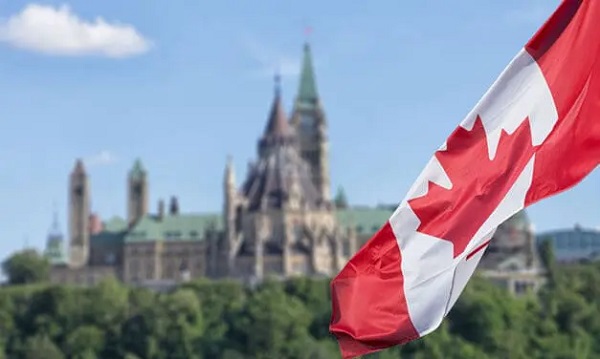Brownstone Institute
The Book We Need and Only Justin Hart Could Write

This article originally published by the Brownstone Institute
BY
Sometimes, even now, even after writing a book and probably a thousand or more articles on the topic, and following it every step of the way, it still feels like I dreamed the whole thing. Not a good dream but a nightmare of exceptionally dark attacks on freedom. It got so bad that online memes started deliberately misspelling the word: “freedumb.”
They really did cancel two years of public worship services, segregate the large cities, abolish in-person education, foist masks on all the kids, destroy millions of businesses, censor all media so that we could barely discover facts, forget everything that humanity only recently knew about immunity, end concerts, impose limits on house parties, scrap weddings and funerals, lock the elderly into their homes so that kids couldn’t visit, end dentistry, impose travel restrictions across state borders, and….
Yes, I could go on but there remains a sense of unreality about the whole thing. It all happened right here in the land of the free. The Prohibition years (1920-1932) were grim and ridiculous enough and proof that freedom is nowhere entirely and always safe. But the Covid epoch makes Prohibition seem very mild by comparison. The ostensible reason for the sudden imposition of totalitarian rule was to control a virus with an infection fatality rate of 0.035% for people under the age of 70.
None of these wildly destructive efforts stopped the virus. It went ahead patiently and infected the whole population that was made woefully unhealthy due to the egregiously coercive response to the virus, and then our immune systems adapted. It was all utter madness, so much so that masses of people just want to forget the whole thing, especially because so many people and both political parties participated.
We are all left with a kind of PTSD. I don’t know what the right cure for that condition is but surely coming to terms with the grim reality of what happened is essential. My worry all along is that the concerted efforts to pretend like none of this occurred, or that it was no big deal, or that it was necessary and needs to happen again, and that governments and experts did their best given the paucity of information, and so on, would actually succeed.
It would be a tragedy if we do not learn from our recent egregious experiences. Reports from the campaign trail of 2022 indicate that the Covid response is a huge issue among voters.
“Among deeply conservative and often Trump-backed congressional and gubernatorial candidates,” writes StatNews, “calls to investigate or even jail Anthony Fauci have become regular campaign rallying cries. Ads lambasting Democrats for school shutdowns, business closures and mask mandates are running in heated races including in Georgia and Florida, where Democratic candidates trail their opponents in the polls.”
My worry is that the Covid response would not become a campaign issue at all simply because both parties are so heavily implicated in the pandemic response. After all, it was Trump who was gaslighted into green-lighting the lockdowns in the first place. But even party silence has not been able to stop the waves of outrage. Everyone’s lives were shattered by it all, from the school closures to the deliberate destruction of businesses to the preposterous kabuki dance scripted by the CDC to forever avoid the virus that ended up infecting everyone.
In any case, I’ve waited for the book that could tell the story of all the horrors in a readable form and also back it all by the research we knew was there from the beginning. There are not that many people around who could write such a book simply because there weren’t many people who had a bead on this disaster from the beginning.
One of them is political consultant and businessman Justin Hart, who watched the unfolding of this mess from its first days. He founded the site Rational Ground to document it all, and provide a clearer perspective. He ended up becoming a major source for people who had an intuition that something was very wrong but needed data to back it all up. Like me, he has ended up dedicating nearly three years of his life countering the mania.
Fortunately for all of us – and fortunately for historians of the future who will be utterly perplexed by this period of history – he just has written a brilliant book. It is Gone Viral: How Covid Drove the World Insane. I highly recommend this to everyone who has been astonished by the unfolding of events and equally shocked at how little in the way of reckoning has really taken place. Hart is the perfect one for the job here: matching rigor with humor, argument with anecdote, and somehow managing to tell a nearly comprehensive story without ever getting bogged down. The voice is clear, confident, and compelling.
He covers it all: school, church, and business closures, travel restrictions, forced jabs, populist disease panic, media censorship and complicity in lies, and the massive corruption of science.
I especially appreciate his detailed work on masking. He proves their ineffectiveness but also utterly skewers the propaganda to push them anyway. I’m particularly bitter about this subject because it was obvious to me from the beginning how preposterous the whole thing was.
On May 2, 2020, I tweeted that after lockdowns “the face mask will be rightly regarded as a symbol of obsequious obedience and grotesque compliance with arbitrary and ignorant authority.” I’ve never been so much attacked for a single thought in my life, including whole treatises in large-circulation publications, as if I had committed a thought crime. I was trolled for months, even by one-time friends.
That’s how crazy the world had become. Hart’s book chronicles it all, including the stickers on the floor, the one-way grocery aisles, the closing of hospitals and day cares, the insane rules on dining, the supply-chain breakages and so much more.
Everything here is written with a special confidence that is tremendously admirable, and this is because Hart is one of the few intellectuals who was correct about the whole hullabaloo from the very beginning. Therefore he doesn’t need to embark among some silly dance in which restrictions were fine in the beginning but later became too much. Nope: he kept his wits about him the whole time. Thus does he have the credibility to write without apologies.
He also writes extremely well. We’ve been stuffed to the gills in data, studies, and in scientific claims and counterclaims deploying language that had been unfamiliar to most people until 2020. What we’ve lacked is clear thinking, plain English, and blunt truth in an organized package, turning chaos to order. This is what Hart provides.
No book can cover it all so he is careful to stay away from the purely medical aspects of the controversies about early treatment, for example. However, Peter McCullough covers this ably in The Courage to Face Covid-19. Other aspects of this disaster have been covered in Naomi Wolf’s The Bodies of Others, Fritjers/Foster/Baker The Great Covid Panic, Scott Atlas’s A Plague Upon Our House, Alex Berenson’s Pandemia, and perhaps the forthcoming book by Paul Alexander entitled Presidential Takedown for the very weird early history of the pandemic response.
Still, for regular people who seek to come to terms with the madness that befell the world, I would rank Justin Hart’s book among those that should be considered a staple reading on the whole topic. It’s as much a medical and political history as it is a psychological study in mass hysteria. Reading it is a form of therapy in the old Freudian sense: unearthing that trauma we so desperately want to forget and bringing it to the surface so that we can be honest about the sufferings we’ve endured and move on.
A mischievous idea: send a copy to every journalist at every major venue that assisted in drumming up the panic that wrecked our rights, liberties, property, and families. They need to face the truth about what they have done. This book is a great tool of truth and, hopefully, justice.
Brownstone Institute
If the President in the White House can’t make changes, who’s in charge?

From the Brownstone Institute
By
Who Controls the Administrative State?
President Trump on March 20, 2025, ordered the following: “The Secretary of Education shall, to the maximum extent appropriate and permitted by law, take all necessary steps to facilitate the closure of the Department of Education.”
That is interesting language: to “take all necessary steps to facilitate the closure” is not the same as closing it. And what is “permitted by law” is precisely what is in dispute.
It is meant to feel like abolition, and the media reported it as such, but it is not even close. This is not Trump’s fault. The supposed authoritarian has his hands tied in many directions, even over agencies he supposedly controls, the actions of which he must ultimately bear responsibility.
The Department of Education is an executive agency, created by Congress in 1979. Trump wants it gone forever. So do his voters. Can he do that? No but can he destaff the place and scatter its functions? No one knows for sure. Who decides? Presumably the highest court, eventually.
How this is decided – whether the president is actually in charge or really just a symbolic figure like the King of Sweden – affects not just this one destructive agency but hundreds more. Indeed, the fate of the whole of freedom and functioning of constitutional republics may depend on the answer.
All burning questions of politics today turn on who or what is in charge of the administrative state. No one knows the answer and this is for a reason. The main functioning of the modern state falls to a beast that does not exist in the Constitution.
The public mind has never had great love for bureaucracies. Consistent with Max Weber’s worry, they have put society in an impenetrable “iron cage” built of bloodless rationalism, needling edicts, corporatist corruption, and never-ending empire-building checked by neither budgetary restraint nor plebiscite.
Today’s full consciousness of the authority and ubiquity of the administrative state is rather new. The term itself is a mouthful and doesn’t come close to describing the breadth and depth of the problem, including its root systems and retail branches. The new awareness is that neither the people nor their elected representatives are really in charge of the regime under which we live, which betrays the whole political promise of the Enlightenment.
This dawning awareness is probably 100 years late. The machinery of what is popularly known as the “deep state” – I’ve argued there are deep, middle, and shallow layers – has been growing in the US since the inception of the civil service in 1883 and thoroughly entrenched over two world wars and countless crises at home and abroad.
The edifice of compulsion and control is indescribably huge. No one can agree precisely on how many agencies there are or how many people work for them, much less how many institutions and individuals work on contract for them, either directly or indirectly. And that is just the public face; the subterranean branch is far more elusive.
The revolt against them all came with the Covid controls, when everyone was surrounded on all sides by forces outside our purview and about which the politicians knew not much at all. Then those same institutional forces appear to be involved in overturning the rule of a very popular politician whom they tried to stop from gaining a second term.
The combination of this series of outrages – what Jefferson in his Declaration called “a long train of abuses and usurpations, pursuing invariably the same Object” – has led to a torrent of awareness. This has translated into political action.
A distinguishing mark of Trump’s second term has been an optically concerted effort, at least initially, to take control of and then curb administrative state power, more so than any executive in living memory. At every step in these efforts, there has been some barrier, even many on all sides.
There are at least 100 legal challenges making their way through courts. District judges are striking down Trump’s ability to fire workers, redirect funding, curb responsibilities, and otherwise change the way they do business.
Even the signature early achievement of DOGE – the shuttering of USAID – has been stopped by a judge with an attempt to reverse it. A judge has even dared tell the Trump administration who it can and cannot hire at USAID.
Not a day goes by when the New York Times does not manufacture some maudlin defense of the put-upon minions of the tax-funded managerial class. In this worldview, the agencies are always right, whereas any elected or appointed person seeking to rein them in or terminate them is attacking the public interest.
After all, as it turns out, legacy media and the administrative state have worked together for at least a century to cobble together what was conventionally called “the news.” Where would the NYT or the whole legacy media otherwise be?
So ferocious has been the pushback against even the paltry successes and often cosmetic reforms of MAGA/MAHA/DOGE that vigilantes have engaged in terrorism against Teslas and their owners. Not even returning astronauts from being “lost in space” has redeemed Elon Musk from the wrath of the ruling class. Hating him and his companies is the “new thing” for NPCs, on a long list that began with masks, shots, supporting Ukraine, and surgical rights for gender dysphoria.
What is really at stake, more so than any issue in American life (and this applies to states around the world) – far more than any ideological battles over left and right, red and blue, or race and class – is the status, power, and security of the administrative state itself and all its works.
We claim to support democracy yet all the while, empires of command-and-control have arisen among us. The victims have only one mechanism available to fight back: the vote. Can that work? We do not yet know. This question will likely be decided by the highest court.
All of which is awkward. It is impossible to get around this US government organizational chart. All but a handful of agencies live under the category of the executive branch. Article 2, Section 1, says: “The executive Power shall be vested in a President of the United States of America.”

Does the president control the whole of the executive branch in a meaningful way? One would think so. It’s impossible to understand how it could be otherwise. The chief executive is…the chief executive. He is held responsible for what these agencies do – we certainly blasted away at the Trump administration in the first term for everything that happened under his watch. In that case, and if the buck really does stop at the Oval Office desk, the president must have some modicum of control beyond the ability to tag a marionette to get the best parking spot at the agency.
What is the alternative to presidential oversight and management of the agencies listed in this branch of government? They run themselves? That claim means nothing in practice.
For an agency to be deemed “independent” turns out to mean codependency with the industries regulated, subsidized, penalized, or otherwise impacted by its operations. HUD does housing development, FDA does pharmaceuticals, DOA does farming, DOL does unions, DOE does oil and turbines, DOD does tanks and bombs, FAA does airlines, and so on It goes forever.
That’s what “independence” means in practice: total acquiescence to industrial cartels, trade groups, and behind-the-scenes systems of payola, blackmail, and graft, while the powerless among the people live with the results. This much we have learned and cannot unlearn.
That is precisely the problem that cries out for a solution. The solution of elections seems reasonable only if the people we elected actually have the authority over the thing they seek to reform.
There are criticisms of the idea of executive control of executive agencies, which is really nothing other than the system the Founders established.
First, conceding more power to the president raises fears that he will behave like a dictator, a fear that is legitimate. Partisan supporters of Trump won’t be happy when the precedent is cited to reverse Trump’s political priorities and the agencies turn on red-state voters in revenge.
That problem is solved by dismantling agency power itself, which, interestingly, is mostly what Trump’s executive orders have sought to achieve and which the courts and media have worked to stop.
Second, one worries about the return of the “spoils system,” the supposedly corrupt system by which the president hands out favors to friends in the form of emoluments, a practice the establishment of the civil service was supposed to stop.
In reality, the new system of the early 20th century fixed nothing but only added another layer, a permanent ruling class to participate more fully in a new type of spoils system that operated now under the cloak of science and efficiency.
Honestly, can we really compare the petty thievery of Tammany Hall to the global depredations of USAID?
Third, it is said that presidential control of agencies threatens to erode checks and balances. The obvious response is the organizational chart above. That happened long ago as Congress created and funded agency after agency from the Wilson to the Biden administration, all under executive control.
Congress perhaps wanted the administrative state to be an unannounced and unaccountable fourth branch, but nothing in the founding documents created or imagined such a thing.
If you are worried about being dominated and destroyed by a ravenous beast, the best approach is not to adopt one, feed it to adulthood, train it to attack and eat people, and then unleash it.
The Covid years taught us to fear the power of the agencies and those who control them not just nationally but globally. The question now is two-fold: what can be done about it and how to get from here to there?
Trump’s executive order on the Department of Education illustrates the point precisely. His administration is so uncertain of what it does and can control, even of agencies that are wholly executive agencies, listed clearly under the heading of executive agencies, that it has to dodge and weave practical and legal barriers and land mines, even in its own supposed executive pronouncements, even to urge what might amount to be minor reforms.
Whoever is in charge of such a system, it is clearly not the people.
Brownstone Institute
The New Enthusiasm for Slaughter

From the Brownstone Institute
By
What War Means
My mother once told me how my father still woke up screaming in the night years after I was born, decades after the Second World War (WWII) ended. I had not known – probably like most children of those who fought. For him, it was visions of his friends going down in burning aircraft – other bombers of his squadron off north Australia – and to be helpless, watching, as they burnt and fell. Few born after that war could really appreciate what their fathers, and mothers, went through.
Early in the movie Saving Private Ryan, there is an extended D-Day scene of the front doors of the landing craft opening on the Normandy beaches, and all those inside being torn apart by bullets. It happens to one landing craft after another. Bankers, teachers, students, and farmers being ripped in pieces and their guts spilling out whilst they, still alive, call for help that cannot come. That is what happens when a machine gun opens up through the open door of a landing craft, or an armored personnel carrier, of a group sent to secure a tree line.
It is what a lot of politicians are calling for now.
People with shares in the arms industry become a little richer every time one of those shells is fired and has to be replaced. They gain financially, and often politically, from bodies being ripped open. This is what we call war. It is increasingly popular as a political strategy, though generally for others and the children of others.
Of course, the effects of war go beyond the dismembering and lonely death of many of those fighting. Massacres of civilians and rape of women can become common, as brutality enables humans to be seen as unwanted objects. If all this sounds abstract, apply it to your loved ones and think what that would mean.
I believe there can be just wars, and this is not a discussion about the evil of war, or who is right or wrong in current wars. Just a recognition that war is something worth avoiding, despite its apparent popularity amongst many leaders and our media.
The EU Reverses Its Focus
When the Brexit vote determined that Britain would leave the European Union (EU), I, like many, despaired. We should learn from history, and the EU’s existence had coincided with the longest period of peace between Western European States in well over 2,000 years.
Leaving the EU seemed to be risking this success. Surely, it is better to work together, to talk and cooperate with old enemies, in a constructive way? The media, and the political left, center, and much of the right seemed at that time, all of nine years ago, to agree. Or so the story went.
We now face a new reality as the EU leadership scrambles to justify continuing a war. Not only continuing, but they had been staunchly refusing to even countenance discussion on ending the killing. It has taken a new regime from across the ocean, a subject of European mockery, to do that.
In Europe, and in parts of American politics, something is going on that is very different from the question of whether current wars are just or unjust. It is an apparent belief that advocacy for continued war is virtuous. Talking to leaders of an opposing country in a war that is killing Europeans by the tens of thousands has been seen as traitorous. Those proposing to view the issues from both sides are somehow “far right.”
The EU, once intended as an instrument to end war, now has a European rearmament strategy. The irony seems lost on both its leaders and its media. Arguments such as “peace through strength” are pathetic when accompanied by censorship, propaganda, and a refusal to talk.
As US Vice-President JD Vance recently asked European leaders, what values are they actually defending?
Europe’s Need for Outside Help
A lack of experience of war does not seem sufficient to explain the current enthusiasm to continue them. Architects of WWII in Europe had certainly experienced the carnage of the First World War. Apart from the financial incentives that human slaughter can bring, there are also political ideologies that enable the mass death of others to be turned into an abstract and even positive idea.
Those dying must be seen to be from a different class, of different intelligence, or otherwise justifiable fodder to feed the cause of the Rules-Based Order or whatever other slogan can distinguish an ‘us’ from a ‘them’…While the current incarnation seems more of a class thing than a geographical or nationalistic one, European history is ripe with variations of both.
Europe appears to be back where it used to be, the aristocracy burning the serfs when not visiting each other’s clubs. Shallow thinking has the day, and the media have adapted themselves accordingly. Democracy means ensuring that only the right people get into power.
Dismembered European corpses and terrorized children are just part of maintaining this ideological purity. War is acceptable once more. Let’s hope such leaders and ideologies can be sidelined by those beyond Europe who are willing to give peace a chance.
There is no virtue in the promotion of mass death. Europe, with its leadership, will benefit from outside help and basic education. It would benefit even further from leadership that values the lives of its people.
-

 Alberta1 day ago
Alberta1 day agoWhy Some Albertans Say Separation Is the Only Way
-

 Business1 day ago
Business1 day agoPension and Severance Estimate for 110 MP’s Who Resigned or Were Defeated in 2025 Federal Election
-

 espionage2 days ago
espionage2 days agoCanada’s Missing Intelligence Command: Convoy Review Takes on New Relevance After FBI Warnings
-

 Business1 day ago
Business1 day agoMounting evidence suggests emissions cap will harm Canadians
-

 Alberta1 day ago
Alberta1 day agoThe Conventional Energy Sector and Pipelines Will Feature Prominently in Alberta’s Referendum Debate
-

 Business1 day ago
Business1 day agoRegulatory reform key to Canada’s energy future
-

 Business1 day ago
Business1 day agoNew fiscal approach necessary to reduce Ottawa’s mountain of debt
-

 COVID-191 day ago
COVID-191 day agoFreedom Convoy trucker Harold Jonker acquitted of all charges









